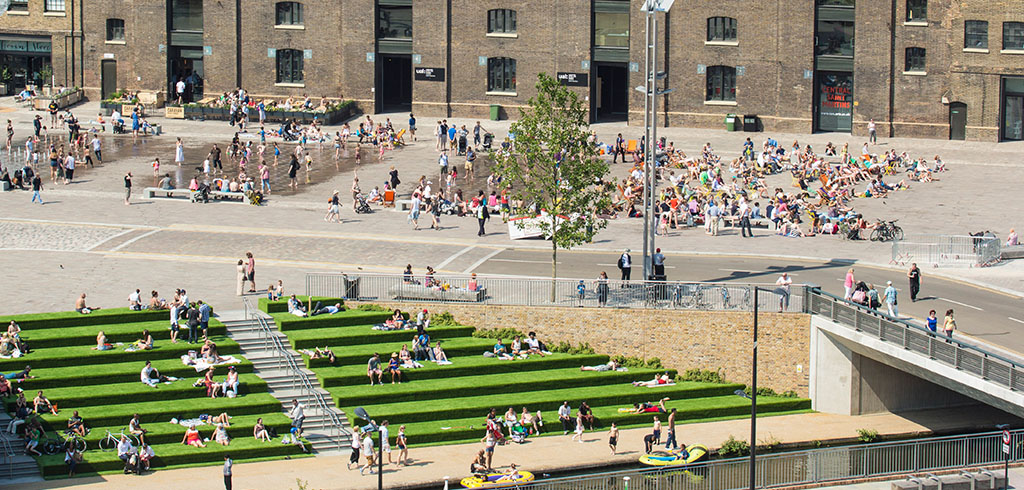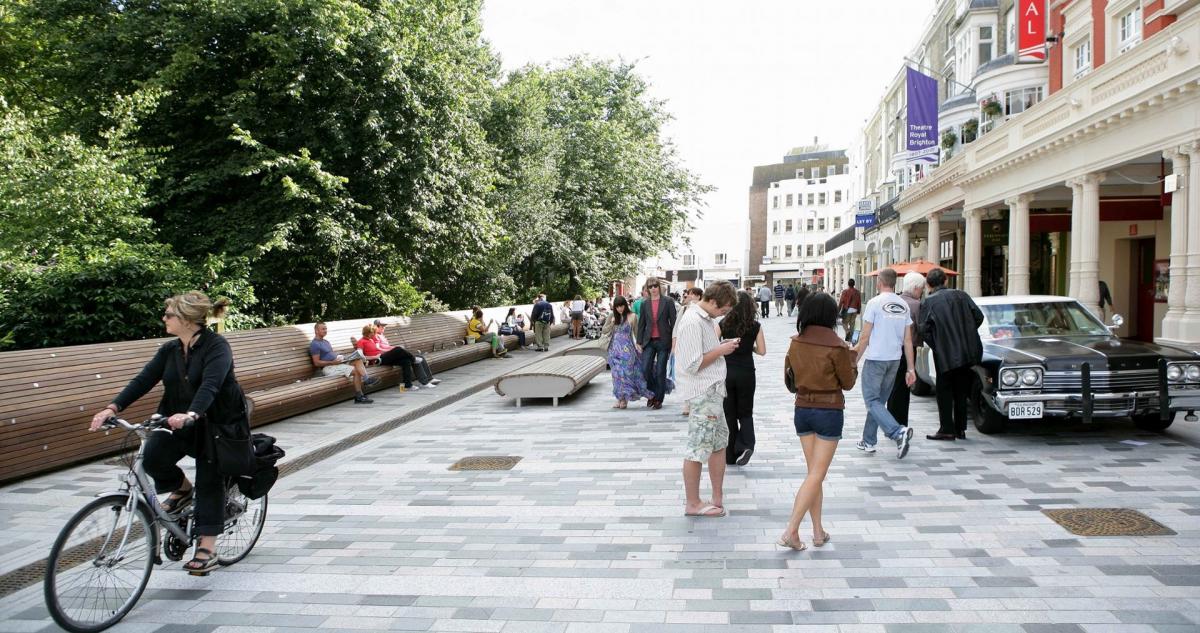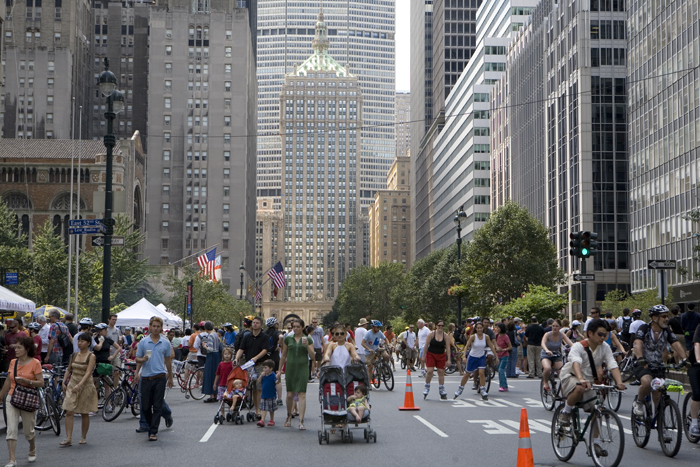
With population density in cities growing and gentrification increasingly becoming a problem, urban planners and architects face new challenges in designing liveable cities. To successfully meet these challenges, it is important to first understand what exactly makes a city liveable—what are the do’s and don’ts, and how can we use past experience to improve our cities today and avoid repeating the same mistakes.
Who else can better answer these questions than some of the most renowned professionals in the field.
Held at the London headquarters of Arup, the multidisciplinary built-environment multinational, and chaired by British architecture and design critic Oliver Wainwright, “Designing the Liveable City” features three preeminent urban planners:
- Jan Gehl, the celebrated Danish architect, urban design consultant,
and author is the founding partner of Gehl Architects. - Richard Rogers, is Senior Partner at Rogers Stirk Harbour + Partners
and winner of the RIBA Gold Medal and Pritzker Prize. - Jerome Frost is the Leader of Arup’s Global Planning Business
and leads its Consulting Sector in the UK, Middle East and Africa.
The discussion is about two-hours long, but I can honestly say that I watched it seemingly on a single breath and didn’t notice the time pass. I encourage you to find the time to watch this exciting exchange between some of the most charismatic and inspiring experts in the field. Below is a short wrap-up of the discussion and its main takeaways.
In the first part of the discussion, each of the guests discuss what, in their opinion, comprises a liveable city.
Richard Rogers

- Liveable cities are designed for a mix of people—rich, poor, old, young, etc.
- Walking should be encouraged, access of cars limited.
- Sustainability is important, as well as the use of brownfield.
- Constrained cities are more liveable than spread-out ones because, in the former, it is easier for people to meet and interact.
Jan Gehl

- Cities should be designed for people; sustainability is important, but it is more important that people feel good in the city.
- The presence of children and the elderly in the streets is a sign of a liveable city. Cities with public spaces, pedestrian streets, and cyclers are safer.
- Pedestrian streets and biking must be encouraged, and cities must not be designed for cars.
Jerome Frost

- The main way to design liveable cities is to talk to people, engage them in the construction process.
Next followed a Q&A session, which I will try to summarize.
Private “public” spaces (like the Granary Square) vs. public spaces, which is more preferable?
Everyone agrees that public spaces are more preferable and privatization should be avoided. But, as Rogers notes, better semi-public than none at all. Frost also suggests that semi-private space might be beneficial for the city, as the owners value it and are interested in making it better.
How successful was your work on public spaces in London?
Gehl finds that it was not very effective, as the mayor doesn’t have much power in the decision-making process.*
Rogers and Frost agree that the process is still just beginning, but there is some positive change in the mindset, and there have been some slow improvements.
* Gehl also points out that the traffic engineers in London are terrible, and they hold back the development.
Tall buildings—part of a liveable city?
This is perhaps one of the questions that raises the most controversy. While Rogers believes that tall buildings, overall, are a better design than mid-height ones; and Frost finds that it is important to have good design where the building meets the ground; Gehl makes a fair point to which everyone has to agree.
He states that it is all about the climate. For example, tall buildings are not suitable for windy cities. Also, they create too much shade, which the inhabitants of the city might not want. Buildings should improve the climate in the city. If a building can do that, then height is not important.
UK funding system vs other countries?
While Gehl says he doesn’t have much information on the question, Rogers and Frost point out that the UK system is quite good but that the government must be more forceful and make decisions, instead of leaving them to the private sector. Rogers also points out the importance of architects being involved in the planning process.
How do major projects, like the Olympics, contribute to the cities?
Frost and Rogers agree that it can have a positive effect if the project is well-designed, thought through years beforehand, and with the long-term ambition to improve a city.
Relationship between surveillance and liveability.
Gehl and Rogers are both strongly against surveillance and believe that it can’t be part of a liveable city. The main way of avoiding surveillance, according to them, is by reducing the number of private spaces and increasing the number of pedestrian streets, public spaces, and other elements of the city that work to make it safer.
Has there been a change of culture concerning making London more pedestrian since 2004. (Gehl delivered a report on it in 2004).
Gehl remembers that in 2004, he delivered a report that concluded people in London were treated badly. You should be able to get around the city, the report said—to cross streets even if you are disabled. The city should be safe; there should be public spaces—all of these were absent in London. While he hasn’t monitored the situation much since, he has seen some good projects built.
Rogers adds that the change is very slow, as there is a big car lobby in London.

How can neighborhoods with Victorian houses be made more lively?
Frost states that the old buildings are not a problem; on the contrary, they are valuable for the city and should be cherished. Perhaps such areas can be densified, but not changed. Rogers also suggest that good transport connection should be provided, and the brownfields must be used.
Cities will over-densify in future, can the liveable cities like Copenhagen cope with that change?
Frost, Rogers, and Gehl all agree that densification of cities is a good thing and should not be feared, as long as the cities are well designed. Gehl points out that even an over-densified city can be liveable if it is designed for people—with public zones, pedestrian infrastructure, and bike lanes.
Doesn’t the use of brownfields bring gentrification?
Rogers: Most of the time, the brownfields are empty anyway, so there is no connection.
Frost: Gentrification has been an issue for decades; it is a matter of land economics. It comes down to the strength of the government; the developers should think of the current residents of the area as much as about the residents they are planning to bring in.
Architects think a lot of the buildings and not the spaces between them. Is this an education problem?
Gehl and Rogers agree that there is a need to rethink the architectural education, make it more human-centric and connect it to other fields like engineering and urban planning. Frost adds that it is not the architect’s problem—often, developers don’t care about good space planning.

Thames Garden Bridge—how can this space be described?
Frost says to protect the space, stating that it provides a focal point and has a little of everything. Rogers believes having it is better than nothing in that area.
With growth in citizens’ engagement in planning, is it possible that in 50 years the citizens will do everything like planning and even building. What will be the role of architects in such a future?
Although everyone finds this question interesting, they agree that such a future is hardly coming soon. For sure, not in the next 50 years.
WRAPPING IT UP
Gehl, Rogers, and Frost agree on most of the points, with some differences. The main takeaways concerning liveable cities are the following:
- Liveable cities should have limited number of cars, good public transport, bike lanes, public spaces, and pedestrian streets.
- Cities need to be mixed, with different people living side by side. Marginalization of the poorer population has to be avoided.
- Constrained cities are more liveable, as they are denser, and people are more connected.
- Tall buildings can have place in a liveable city, as long as they don’t have negative impact on the climate.
Watch the full video of "Designing the Liveable City" here.

